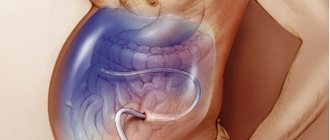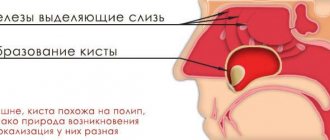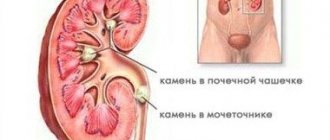Vera Zimina, Doctor of Medical Sciences, phthisiatrician, infectious disease specialist, professor of the Department of Infectious Diseases with courses in epidemiology and phthisiology at RUDN University:
“The illusion spread among the population that we will soon defeat tuberculosis has led to a weakened and commercial shortage of pharmaceutical companies. For a long period of time they did not develop new anti-tuberculosis drugs, only recently we began to receive new effective anti-tuberculosis therapy. “A lot depends on the patients; of course, someone interrupts therapy and, thereby, aggravates the disease.”
The worst case scenario is extensively drug-resistant tuberculosis. It is caused by bacteria that do not respond to active second-line drugs. In such situations, treatment is approached individually; it takes time to select the right regimen. According to WHO estimates, the situation with resistant tuberculosis is worst in India, China and Russia. These countries account for almost half of all cases.
The anti-tuberculosis course of treatment also causes many side effects, so along with the main drugs, doctors prescribe accompanying therapy: antispasmodics, sedatives, antiemetics, enzymes, etc.
Symptoms of pulmonary tuberculosis
Every person should take responsibility for their health and pay attention to even the slightest changes in their own body.
Tuberculosis can occur in old people, adults, and adolescents. Basically, there are no symptoms, and pulmonary tuberculosis does not manifest itself in any way, and can only be detected during fluorography. There are several stages of tuberculosis: primary and secondary. The disease is also divided into forms: open and closed.
Basically, pulmonary tuberculosis occurs chronically: with a severe cough that does not go away even after taking special medications.
Content:
- Symptoms of pulmonary tuberculosis
- Manifestations of infection of the upper respiratory organs
- Signs of extrapulmonary tuberculosis
- Asymptomatic course of the disease
- Patient's appearance
- Manifestations of tuberculosis in infants
- Signs of recovery
The cough itself has a paroxysmal character and worries the patient constantly. There is also sputum present. If it is an ulcerative form, then hemoptysis may also be observed. Important characteristic signs of tuberculosis are pain and burning in the chest area. The infiltrative form of tuberculosis is mostly asymptomatic or with minimal symptoms.
Manifestations in the early stages
As already mentioned, if the form of tuberculosis is initial (mild), then the disease is practically asymptomatic. The patient may not feel any changes or complications in the body at all. A person should be concerned about symptoms such as: dizziness, apathy, sleep disturbance, pale skin, blush on the cheeks, noticeable weight loss, decreased appetite and body temperature that does not exceed 37 degrees.
If a person experiences one or more of the above symptoms, they should consult a doctor and undergo the necessary procedures. Any suspicion should be cause for concern.
Manifestations at the last stage
In the advanced late stage, the disease is practically ineradicable, so this disease should not be brought to a critical state. There are many symptoms of tuberculosis at the last stage; in some ways they are similar to the symptoms in the early stages, but they are more pronounced. A person has a strong and incessant cough, profuse sweating, severe weakness, rapid weight loss with a normal lifestyle, increased body temperature and hemoptysis.
It is worth noting that the last symptom indicates that the Koch bacillus (tuberculosis bacillus) has attacked the human immune system and has developed to such an extent that the organ that has become its habitat is affected to the stage of decomposition. This usually happens during the incubation period, which lasts from 7 to 12 weeks.
Manifestations of infection of the upper respiratory organs
Signs of infection may appear in different respiratory organs. To recognize the disease in time, you should know its symptoms. At the beginning of the development of tuberculosis, the patient develops dryness and soreness in the nose and oropharynx, and he cannot swallow food normally. In addition, there is severe shortness of breath and a hoarse cough.
After some time, severe chills appear, body temperature rises, and breathing becomes difficult. After another period, the voice changes and hemoptysis begins. At the same time, patients lose a lot of weight because they cannot eat properly due to pain.
Tuberculosis of the larynx is manifested by improper mobility of the vocal cords and leads to hoarseness, breathing problems, soreness, and changes in voice.
When the throat is affected, there is severe pain, a sensation of a foreign body in the throat, increased salivation, swelling, rashes and redness of the pharynx mucosa. If we are talking about nasal tuberculosis, then all the symptoms are very similar to ordinary sinusitis: itching, burning, crusts in the nose, frequent bleeding, congestion, pain, the presence of mucopurulent discharge.
Symptoms may be constant, come and go, or progress slowly (sluggish tuberculosis). Rapid progress is also common, when a person can die from the manifestations of the disease in a few weeks.
Contraindications to X-rays
Before talking about contraindications, it is worth noting the development of modern fluorography
, which allows patients to receive a minimal dose of radiation. Therefore, during the treatment of tuberculosis, especially miliary tuberculosis, an x-ray of the lungs is a mandatory and safe procedure: inaction is much more dangerous to life. X-rays of the lungs are absolutely contraindicated for children under 15 years of age and pregnant women. An obstacle to the study is the patient’s serious condition, in which he cannot stand for a long time or hold his breath.
Signs of extrapulmonary tuberculosis
Most often, people are faced with pulmonary tuberculosis, but the disease can also affect other vital human organs: intestines, stomach, eyes, brain, genitourinary system, bones and even skin.
The presence of extrapulmonary incipient tuberculosis can be suspected if there is a long-term disease of organs that cannot be treated. To make an accurate diagnosis, the patient is referred for consultation to specialists and prescribed the necessary blood tests, urine tests and procedures.
It is worth noting that extrapulmonary tuberculosis is curable, but only with proper and timely treatment. This treatment should be carried out exclusively under the supervision of the attending physician.
Gastrointestinal infection
Most often, the disease affects the following organs in the gastrointestinal tract: parts of the small intestine, stomach and cecum. In this case, the intestinal walls become inflamed. The development of the disease is possible after eating contaminated foods, such as milk. The patient experiences pain in the abdominal area, possible diarrhea or constipation, intestinal colic, and bloating.
Nervous system infection
Damage to the brain and spinal cord is one of the most dangerous forms of tuberculosis. Most often, the development of the disease is facilitated by an infection in the lungs.
For this reason, tuberculous meningitis is considered a complication of pulmonary tuberculosis. The central nervous system is also affected. In this case, the patient experiences apathy, irritability, a constant feeling of fatigue and severe headaches.
Osteoarticular lesions
The spine area, cervical regions and large tubular bones are most often affected. Tuberculosis of the shoulder blade, knee, hip joint and bone marrow is all the result of the spread of infection from any other source in the body. This form may not be noticeable for a long time and may manifest itself as a spontaneous fracture. As a result, muscle atrophy and dysfunction of the symphysis pubis may occur.
Skin lesions also exist. Skin tuberculosis is the result of the active spread of infection from any source in the body. The disease develops when human skin comes into contact with the pathogen.
Tuberculosis of lymph nodes
Damage to the lymph nodes is also dangerous. In the early stages of the disease, inflammation of the lymph nodes is observed, without pain and fever. The progress of the inflammatory process leads to the so-called melting of the lymph nodes and the development of fistulas. The risk of infection is very high. This leads to the fact that infected people pose a great epidemiological danger to others. Complications of tuberculosis of the lymph nodes can be tuberculosis of the respiratory tract and inflammation of the pleura.
Infection of the genitourinary system
The most vulnerable organ of the genitourinary system is the kidneys. It is the kidneys that are most often affected. The inflammatory process gradually destroys the organ, which can lead to kidney failure and complete loss of the organ.
Damage to the bladder, adrenal glands, urethra and ureters is mainly a consequence of renal tuberculosis. Damage to the organs of the genitourinary system leads to their deformation and disrupts the urinary tract process, as well as disrupts sexual functions.
This applies to both male and female organs. In men, tuberculosis affects the prostate gland, prostate, testicles and vas deferens. In women - ovaries, uterus, fallopian tubes.
Tuberculosis of the eye
Eye tuberculosis is a fairly common phenomenon. Mycobacteria can affect absolutely any part of the eye. There is tuberculous allergic eye disease, but the most common is metastatic tuberculosis. Diagnosing this disease is extremely difficult. Most often, it is detected by excluding other diseases.
Results and discussion
Visual signs of intestinal tuberculosis were detected in 47 (74.6%) patients; they were characterized by the presence of erosions, infiltrates and ulcers in the colon. All patients underwent a biopsy of erosions or ulcers for histological examination, fluorescence microscopy and culture on solid nutrient media, and PCR. In 24 (38%) cases, microscopy revealed the presence of epithelioid giant cell granulomas, Ziehl-Neelsen staining revealed acid-fast mycobacteria, in 2 (3.2%) cases colon adenocarcinoma was diagnosed, in 4 (6.4%) - cytomegalovirus ulcerative colitis, which is typical for patients with HIV infection; in the remaining 37 (58.7%) cases, nonspecific colitis was detected. It was mandatory to take a biopsy from ulcers and erosions to test for MBT using fluorescent microscopy - in 17 (27%) cases MBT was found. When cultured on solid nutrient media, a positive result was obtained in 21 (33.3%) patients, and in 4 patients in this group, fluorescence microscopy gave a negative result. A PCR study to detect MBT fragments gave a positive result in 28 (44.4%) cases. However, research using the PCR method, which has high sensitivity, cannot be classified as a strictly specific diagnostic method, since the detection of MBT fragments in a biopsy from tuberculous ulcers is possible not only in intestinal tuberculosis, but also when ingesting sputum in patients with pulmonary tuberculosis.
Based on the results of colonoscopies with biopsies, the diagnosis of tuberculosis of the abdominal organs was established in 54 (85.7%) patients.
All patients received chemotherapy for tuberculosis in accordance with standard anti-tuberculosis chemotherapy regimens. In 46 (85.2%) patients, against the background of anti-tuberculosis therapy, clear positive dynamics were noted in the form of an improvement in general well-being, a decrease in the severity of symptoms of tuberculosis intoxication, the disappearance of abdominal pain, and normalization of stool. In 9 (16.6%) patients, despite anti-tuberculosis chemotherapy, no clear positive dynamics were noted: a slight improvement in general well-being, moderate abdominal pain and diarrhea persisted. These patients underwent control colonoscopy, 6 - once, 3 - twice. During the control colonoscopy, in comparison with the previous one, no clear positive dynamics were noted: tuberculous ulcers persisted or even new ones appeared, infiltration of the intestinal wall. Histological examination revealed an active tuberculosis process. These patients had their anti-tuberculosis therapy regimen changed, and all of them experienced clinical improvement.
The results obtained allowed us to conclude that colonoscopy is a fast, inexpensive and diagnostically valuable method for diagnosing tuberculosis of the abdominal organs (intestines), allowing us to reliably establish this diagnosis in 80.6% of patients. In some cases, performing a control colonoscopy against the background of anti-tuberculosis therapy allows one to assess the dynamics of treatment and, if necessary, change the anti-tuberculosis chemotherapy regimen.
Asymptomatic course of the disease
For a long time, pulmonary tuberculosis may be completely asymptomatic, or several mild symptoms may be present. Disseminated tuberculosis mainly manifests itself as a consequence of pneumonia, but most often, the disease is latent (latent form) and does not manifest itself. In this case, the disease can be detected by chance during standard annual examinations: X-rays, fluorography, Mantoux test.
The symptoms of a dangerous disease can often be confused with the usual symptoms of bronchitis, pneumonia or ARVI. In this case, the main sign that you should pay attention to is the presence of symptoms for a long time or the lack of improvement after treatment.
How is an X-ray done to diagnose tuberculosis?
X-rays of light
- the procedure is simple. To perform it, you will need to undress to the waist and stand next to the device in accordance with the doctor’s instructions. Jewelry and other objects that may interfere with scanning are removed, and the abdomen and reproductive organs are covered with radiation protection: a leaded rubber apron. Then, at the command of the radiologist, you need to draw air into your lungs and hold your breath for a few seconds. During this time a picture is taken.
Patient's appearance
Patients with tuberculosis appear emaciated in appearance, as they lose a lot of weight. They also have pale skin and sharp facial features. Despite the pale face, a blush is always noticeable on the cheeks of such people.
Best materials of the month
- Coronaviruses: SARS-CoV-2 (COVID-19)
- Antibiotics for the prevention and treatment of COVID-19: how effective are they?
- The most common "office" diseases
- Does vodka kill coronavirus?
- How to stay alive on our roads?
Manifestations of tuberculosis in infants
If an adult can recognize and understand a disease himself, then how can a serious disease be detected in infants? The characteristic primary signs of tuberculosis in infants and newborns are increased body temperature, impaired or complete lack of appetite, and difficulty breathing. The child may also experience other symptoms, depending on the organ affected. For example, the liver and spleen may be increased in size, since these are the organs that filter tuberculosis bacteria. In addition, an infected baby does not gain weight well. Therefore, it is very important to monitor the behavior of infants and young children in order to detect infection early.











